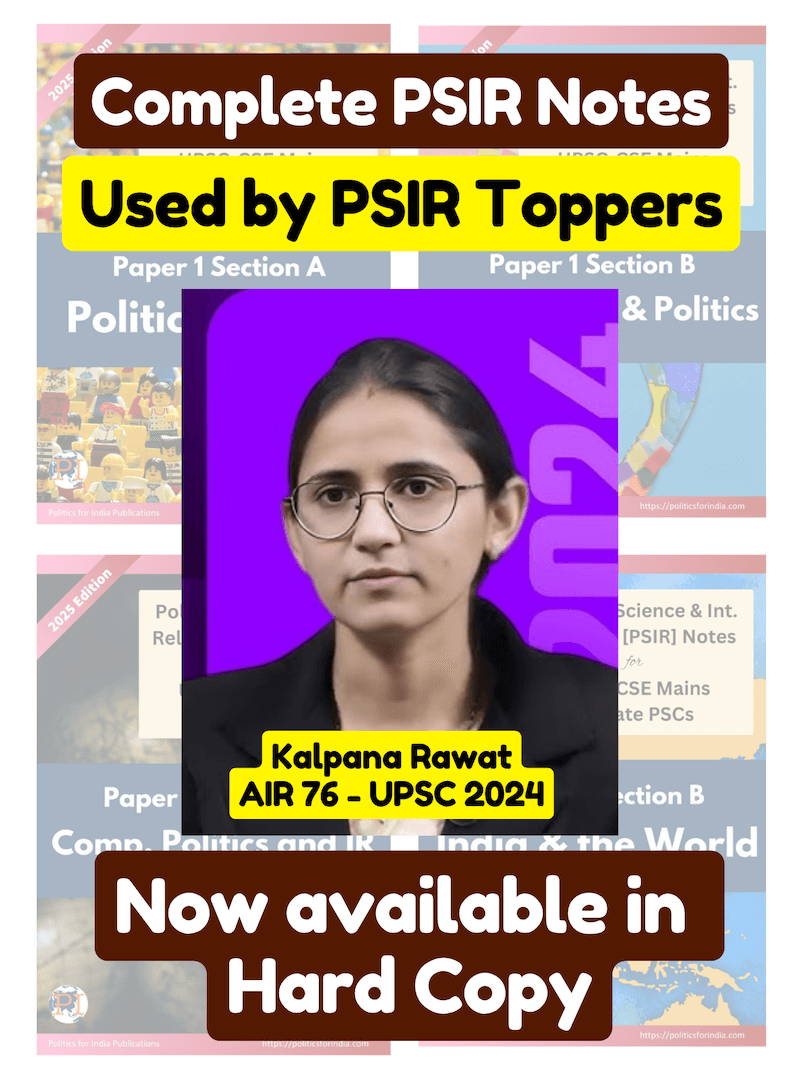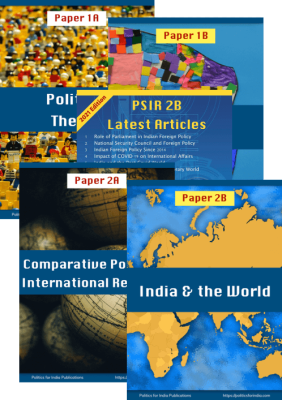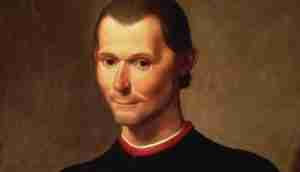1] Life of Kautilya
Kautilya, also known as Chanakya or Vishnugupta, was an ancient Indian philosopher, economist, strategist, and statesman who lived around the 4th century BCE. Kautilya was born into a Brahmin family as the son of Acharya Chanak, in Pataliputra (near present-day Patna in Bihar).
Kautilya played a crucial role in the downfall of the Nanda dynasty and the rise of Chandragupta Maurya. He envisioned a strong and centralized Indian empire and used his strategic acumen to help Chandragupta seize the throne of Magadha. He then served as prime minister and shaped the administration of the Mauryan Empire.
His most influential contribution is the Arthashastra, a comprehensive text that covers a wide range of subjects — from political ethics, espionage, diplomacy, taxation, and law, to agriculture, mining, trade, and military organization. The Arthashastra presents a highly pragmatic and even ruthless view of governance, often compared to Machiavelli’s The Prince, though it predates it by nearly 1800 years.
Kautilya believed that the state is of paramount importance and the king must act in the interest of dharma (duty), artha (economy), and danda (authority). He emphasized a realist approach to politics — advocating for a strong, intelligent ruler supported by an efficient bureaucracy, a well-maintained army, and a network of spies.
He passed away sometime after the establishment of the Mauryan Empire, but his legacy lived on. Kautilya remains a towering figure in Indian political thought, often credited as the father of Indian political science and economics.
Kautilya’s work Arthashastra belongs to the tradition of Dandashasra. The prime issue in Arthashastra is statecraft. However it also discusses dharma and we see the continuity between Manu and Kautilya.
2] Introduction
Kautilya defines statecraft as Arthashastra. Artha denotes material well-being. According to Kautilya, the most important objective of the king is to secure the material well-being of its people. In the words of Kautilya, “Material wellbeing is supreme, attainment of all other goals dharma, kama, moksha depends on material wellbeing.” In ancient times, land was the main source of securing the material wellbeing. Hence the main idea in Arthashastra is how to acquire the land. It is natural for a state to go for acquiring land. The first land to be acquired is the land of neighbour. Hence neighbours are natural enemies. Hence the relations between the two states are the relations of war. Thus Arthashastra deals with ‘art of war’ like Sun Tzu the Chinese strategist. Hence the main idea in Arthashastra is war, strategic planning, balance of power, geopolitics.
Arthashastra can be considered as the first textbook in geopolitics. (Geopolitics is a science of capturing land/resources.) According to the concept of geopolitics, state is an organism. Like any organism, state has to grow. If state will not grow/expand, state will perish or decay. Thus Kautilya’s Arthashastra challenges western view that Indians lacked strategic culture. George Tanham categorically rejected that Indians have any strategic culture or wisdom but Kautilya proves him wrong. It is unfortunate that policymakers in India have overlooked the wisdom found in Arthashastra. However since the beginning of 21st century, with Hindu rightist party coming to power, there is a change in the approach of the south block. We are rediscovering the ancient Indian wisdom.
Main ideas in Arthashastra.
1) State of relations between the two countries.
2) Mandal Siddhant.
3) Saptanga theory. (Saptaprakar theory)
4) Sadgunya Niti. (Sixfold policy)
5) 4 Upaya. (Fourfold policy)
6) Types of wars.
3] Foreign Policy
According to Kautilya, the relations between the two states are the relations of war, where the strength of lion prevails.
Thus Kautilya is a realist who believes that interstate relations are the struggle for power. According to realist wisdom, interstate relations or international politics is a state of war. Nations are either in the war or in the preparation of war. Hence in such situations state can rely only on power. Kautilya belongs to the school of ‘offensive realism’. He believes in power maximization rather than defence maximization. For offensive realists, offence is the best defence.
A] Kautilya’s Ideas on Warfare
War is inevitable feature of inter-state relations. War is Kshatriya dharma. War is necessary for the material well-being. King should aspire to become Chakravarti Samrat. (It means King should strive to achieve hegemony and not just balance of power.)
According to Kautilya, there can be three types of wars depending on the situation.
- Parakrama yuddha – means open war.
- Koot yuddha – gorilla war.
- Tushnim (silent) yuddha – proxy war.
Kautilya also mentions three types of victories.
- Dharma Vijaya – as per rules of war.
- Lobha Vijaya – by giving economic inducement to the enemy’s forces.
- Asura Vijaya – by cunningness or unfair means.
B] Mandala Siddhant
Context of the mandal siddhant is rajdharma i.e. kshatriya dharma. Kshatriya dharma is war, hence after coronation king has to start for expedition. In ancient India there was tradition of different yajnas, like Asvamedha yajna, Rajasuya yajna. According to Kautilya, king should have the desire to become Chakravarthi Samrat. He addresses the king as Vijigishu means one who aspires for victory.
The strategy of war is explained through Mandala Siddhant.
Mandala represents the concentric circle of kings frequently used in Indian texts. Mandala siddhanta is based on the view that neighbours are natural enemies. Because both kings have to achieve the material welfare and both aim at acquiring the same piece of land. e.g. India – Pakistan – China all aim to acquire the territory of Kashmir, which is not only full of resources but also strategically located. Hence there is bound to be a war between India and Pakistan, India and China over the territory of Kashmir.
Mandal siddhant also suggests that there is no permanent friend or permanent enemy. When Vijigushu acquires the land of the enemy, the mandal of Vijigishu extends. Now the country which was mitra (friend) will become enemy. Hence nations seek hegemony as well as balance of power. When king thinks of going for expedition in one direction, he should not ignore enemies and friend in the opposite direction.
C] What policies Vijigishu can adopt?
Depending on the situation, vijigishu has an option of following policies.
Four Upayas: Sama, Dama, Danda, Bheda. This shows the realist tradition similar to Machiavelli. According to Machiavelli, in politics ends justify the means.
Kautilya also gives Shada gunya Siddhanta. (Sixfold policy).
Vijigishu should opt for
- Sandhi (If enemy is strong.)
- Vigraha (Break the Sandhi, start war if you are strong.)
- Asana (Stationing of the forces near enemy’s territory.)
- Yana (Sanskrit word for mobilization – it means military exercise near enemy’s territory.)
- Samashraya (Joining hands with those who have similar aims, like Quad.)
- Dvaidhbhava (Dual policy – it means friendship with one enemy for the time being and enmity with the other – don’t open two fronts at the same time.)
Kautilya mentions the importance of different kings in the Mandal. Two kings hold special importance.
1) Udasin – it denotes neutral state. e.g. Switzerland in Europe, Turkmenistan in central Asia has been given neutral status. [Neutrality is a status recognized by others with respect to the country in the war. If a country is neutral in the war, it means it will have to give equal access to its territory to both the parties in war. e.g. Nepal aspires to get neutral status, however Nepal’s aspirations is not in favour of India. As of now, Nepal is tied to India with 1950 treaty. Hence only India can access Nepal’s territory during war. If Nepal gets neutral status, China will also get equal access.]
2) Buffer state / madhyama – buffer state is a small state between two major powers. The purpose is to avoid direct confrontation. e.g. Bhutan, Sikkim, Nepal, Tibet have been the ideal buffer states between India and China. Whichever country acquires the buffer state gets advantage. China occupied Tibet; India acquired Sikkim. India maintained the strategic advantage by entering into treaties with Bhutan and Nepal.
4] Saptanga Theory
Saptanga Siddhant aka Sapta Prakriti, explains the elements of the state. It is an example of the organic view of the state. It explains state as a system of seven elements / limbs or seven elements of sovereignty. Vijigishu has to take into account the status of its own elements as well as the elements of other kings in mandal. Hence before starting war, king has to take the stock of 72 elements of sovereignty. Saptangas can be considered as ‘determinants of state’s power’.
A] King
King is centre. All other elements depend upon King. According to Kautilya, if King is smart and other elements of sovereignty are weak, he can convert these elements into the elements of strength. On the other hand, if king is not smart, lacks courage but other elements of sovereignty are strong, then also these elements will not be able to play the role of determinant of power. This shows the importance of leadership. Kautilya’s views on kingship have a huge continuity with Manu’s views on kingship. However Kautilya is not specific about the varna of the king, he suggests person from any varna to be eligible for the king.
Though king plays the most important role in the system, yet king needs to understand that single wheel cannot turn the chariot of the state. It means king cannot rule alone, king needs the help of other elements, hence king should give adequate importance to the other elements. Thus he takes the organic view that the state is not just the sum of parts, state is an interdependence though the king retains primacy. He warns against arrogance. Arrogant king will destroy himself.
B] Amatyas
Amatyas are the senior ministers, preferably brahmins. Required for consultation. Should be well versed in Vedas, Shastras. Out of all amatyas, the most important role is of ambassador. King should be particular about choosing the ambassador. Ambassador is the representative of the king to the outside world. Thus next to king in importance. Ambassador should be well versed, man of integrity, should be dedicated towards the king. Ambassador should be handsome.
He suggests, king should have at least three amatyas because two can easily conspire against the king. King should keep on testing the integrity of the amatyas because they can be potential challenge. He gives detailed measures to check the integrity. e.g. he gives suggestion to send spies to amatyas with the message that queen is in love with amatya, if amatya will come to palace, queen will help amatya in killing the king and then amatya can become the king.
C] Forts / Durg
Mauryans were known for fortifications. Forts are the symbols of the offensive and defensive powers of the state. Kautilya advices to construct different types of forts that include hill forts, water forts, desert forts.
D] Janpad
Janpad represent the heart of the state. It is a place where common man/ citizens lives. It is a place for economic activities. It is the duty of the king to take care of the needs of Janpath. King should treat his citizens as his children. In the words of Kautilya, “In the happiness of the subjects, lies the happiness of the king.”
At the same time, Kautilya advices king to keep track of the public opinion by using spies to prevent rebellion.
E] Kosh / Treasury
Kosh of the state should be enough not just for meeting day-to-day expenditures but to meet any sort of calamity, whether it is war, or natural disasters.
E] Bala (Force)
Kautilya prefers the army of Kshatriyas. However if need arises, other varnas can also be included. King should have sufficient army and should always keep the morale of the army high.
F] Mitra (Allies)
Mitras have symbolic importance. When a person has lot of mitras, it shows that the person is powerful. Hence it is a symbol of power to be the friend of strong.
5] Internal Administration
Kautilya like Machiavelli deals with the internal as well as external aspects of the statecraft. Conceptually the internal and external cannot be separated. As far as internal statecraft is concerned, Kautilya has given special emphasis on 1| Administration 2| Espionage (Spies)
A] Administration
Kautilya is extremely concerned with the problem of corruption among officials. 1. According to Kautilya, corruption is inevitable, part of public life. It is like honey on the tongue, it is not possible, not to taste it. Public officials handle so much of the resources that corruption becomes unavoidable. Even officials may not be knowing when they are doing corruption. Fish swimming in the water will itself not know, when it has drunk the water.
Though corruption is the part of public life, yet corruption is not desirable. Corruption weakens the state, both internally and externally. It weakens the capacity of the state to achieve the welfare of the people. It brings the morale of the people down. It is very easy for enemy to win if morale is down. Hence corruption needs to be tackled.
The biggest problem is detection of the corruption. In the words of Kautilya “It is easy to detect the movement of the birds in the sky but it is not easy to detect the act of corruption by the officials.” Kautilya himself made the list of at least forty types of embezzlements done by officials.
e.g.
- Officials can play with weights and measures.
- Officials can sale the resource at a higher price but show lesser value in the accounts.
- Officials can sale the resources at a lesser value than the actual value.
- They may take out public money for private purposes but enter it in the account later.
Kautilya also suggests measures to deal with corruption.
- Right sizing the bureaucracy.
- Transfer the person before he understands all the loopholes in the system.
- Protection to the whistleblowers.
- Not just punishing the official, punish the entire chain. Punish dayak (One who gives bribe), one who receives (pratigraha), one who keeps (nidhayak).
- Public humiliation of the corrupt officials and reward honest officials.
B] Espionage
Kautilya prescribes king to maintain the efficient system of intelligence. He mentions at least 10 types of spies. He even goes to the extent of suggesting the use of children, women, orphans, destitute, bhiksuks, sadhus to be used as spies. Some of the spies mentioned by Kautilya include kapatikas (students), grahapalikas (domestic servants), udasthita (destitute).
He suggests the use of sadhus to frighten the enemy king. Thus like Sun Tzu, he talks about psychological warfare also. Sadhus can go to the enemy king, can tell the fortune, they can frighten the king by suggesting that the bad times are coming. Thus like Machiavelli he also permits the use of religion.
6] Comparing Arthashastra
A] Kautilya and Machiavelli
Pandit Nehru in his book DISCOVERY OF INDIA has mentioned Kautilya as Indian Machiavelli. Upinder Kaur in her recent book titled POLITICAL VIOLENCE IN ANCIENT INDIA suggests that ideally Machiavelli should have been called Italian Kautilya.
Scholars like Winternitz, Bottazi have traced the roots of realism in Kautilya along with Thucydides. Machiavelli is also realist.
Kautilya and Machiavelli differ in time and space yet there are remarkable similarities between the two scholars. Both had similar concerns. Both were concerned about the state of motherland. Both were fearful of motherland being vulnerable to external invasions. Both are realists. Both give advices on the statecraft. Both go for the separation between ends and means. If Machiavelli suggests that in politics ends justify the means, Kautilya suggests, Sama, Dama, Danda, Bheda.
Both allow the use of religion in the interest of the state. Both favour imperialist foreign policy. Both are concerned with the corruption within the state. Both give similar advices on the statecraft. Both suggests that the king should rule with the iron hand. Both expect king to be the symbol of knowledge and sacrifice. The actions of the king are justified only for the sake of the happiness of the people. Thus directly or indirectly Kautilya’s king and Machiavelli’s prince comes near to Plato’s philosopher king. Kautilya’s king shares many characteristics. According to Kautilya, king should have the knowledge of Vedas, Shastras. King should have self-control, should not be arrogant, should control the appetite.
Max Weber in his book ‘Politics as a Vocation’ has mentioned that Kautilya was more Machiavellian than Machiavelli. Machiavelli’s advices are too general. Machiavelli appears hesitant about what kings should do. There is no hesitation in Kautilya when he suggests extreme means. According to Max Weber, ‘when we look at Kautilya’s king, Machiavelli’s prince appears ‘harmless.’
It is to be noted that there is a similarity in the circumstances, aims, approach, style, perspective yet they differ in the sense that Machiavelli was not as fortunate as Kautilya.
B] Dharmashastra and Arthashastra
In Dharmashastra and Arthashastra, we see almost two sides of the same coin. Dharmashastras sacralises the polity. The purpose of king is to ensure dharma is protected. Kautilya, however, secularizes the notion of polity.
Yet, both agree on key points: the necessity of a king, the duty of protecting subjects, and the goal of social order. They only differ on methods and emphasis. Dharmashastra would have the king ruled by scripture and guided by priests; Arthashastra would have the king rule by intellect and guided by empiricism (with priests being advisers at best).
Interestingly, Kautilya’s Arthashastra does endorse Dharma as an ideal – for example, it upholds the theory of the divine origin of the state (likely to strengthen legitimacy), and advises that a king should maintain dharma, artha, and kama in his domain in balance. Dharmashastras emphasise dharma. Kautilya however, considers dharma as dependent on artha and thus securing the political power and wealth are primary concerns of king.
Despite the difference, it would be wrong to say that the approaches are contradictory. Instead, one can see Arthashastra as complementing Dharmashastra: where Manu defined the ethical ends of government, Kautilya defined the effective means to those ends. Ancient Indian political thought is the richer for containing both these strands – one stressing moral order, the other statecraft and empiricism.
7] Test Your Knowledge!
1] Kautilya’s Arthshastra belong to which tradition?
a) Dharmashastra
b) Dandashastra
c) Vedang
d) Upnishad
Ans: b) Dandashastra
Show Answer
2] Which of the following is true in light of Arthshastra?
a) The objective of king is to secure spiritual well-being of the people
b) The relation between states is that of cooperation
c) Neighbour states are natural enemies
d) States should avoid acquiring land of neighbours
Ans: c) Neighbour states are natural enemies
Show Answer
3] When it comes to inter-state relations, Kautilya can be said to belong to the school of
a) Offensive realism
b) Defensive realism
c) Liberalism
d) Constructivism
Ans: a) Offensive realism
Show Answer
4] What is Mandal Siddhant all about?
a) It explains about the elements of state
b) It talks about the internal administration of the state
c) It talks about the espionage system of the state
d) It explains strategy of war
Ans: d) It explains strategy of war
Show Answer
5] Why are neighbours natural enemies, according to Arthshastra?
a) Because easy immigration between the neighbouring state create distrust
b) Both aim at acquiring the same piece of land
c) Both kings want to make themselves appear better than the other
d) Because there will always be a third state to bre enmity between two neighbouring states
Ans: b) Both aim at acquiring the same piece of land
Show Answer
6] What does Dvaibhava, one of the six fold policies given by Kautilya mean?
a) Making alliance when enemy is strong
b) Stationing of the forces near enemy’s territory
c) Dual policy (friendship with one enemy for the time being and enmity with other)
d) Joining hands with those who have similar aims
Ans: c) Dual policy (friendship with one enemy for the time being and enmity with other)
Show Answer
7] What is the difference between Udasin and Madhyama?
a) Udasin denotes buffer state while Madhyama is a neutral state
b) Udasin denotes neutral state while Madhyama is a buffer state
c) Udasin denote a expanding kingdom while Madhyama is a state ruled by a weak ruler
d) Madhyama denote an expanding kingdom while Udasin is one ruled by a weak ruler
Ans: b) Udasin denotes neutral state while Madhyama is a buffer state
Show Answer
8] Saptang Siddhant is an example of
a) Organic view of state
b) Social-contractual view of state
c) Pluralist view of state
d) Communitarian view of state
Ans: a) Organic view of state
Show Answer
9] Who is the most important Amatya according to Arthashastra?
a) Amatya who manages economy
b) Amatya who manages the army
c) Amatya who manages espionage system
d) Ambassador to other states
Ans: d) Ambassador to other states
Show Answer
10] Which of the following has been suggested by Arthashastra?
a) Psychological warfare
b) Use of orphans as spies
c) Spying on Amatyas
d) All of the above
Ans: d) All of the above
Show Answer
11] Who made the statement, “when we look at Kautilya’s king, Machiavelli’s prince appear harmless.”
a) Pt. Nehru
b) Max Weber
c) Upinder Kaur
d) Winternitz
Ans: b) Max Weber

















I want the PDF of this available content. is this possible… Please let me know
Hi Shivani,
The content is available in PDF format for purchase at https://products.politicsforindia.com/product/psir-1a-political-theory-notes/
Could you please explain the 4 upayas (fourfold policy)?
I am confused about the word Statecraft. I mean does it include only domestic administration or only foreign affairs or both. For instance, in 2017 question of Kautilya theory of Statecraft, we need to write –
1) Rajamandala theory, sadguna Siddhanta and upayas ONLY
2) or Saptanga theory and about corruption and espionage ONLY
3) or both 1 and 2 points
Can you please clear it for me?
Hello Parag, thank you for your question. Statecraft simply means management of power OR the skill of governing a country (Oxford dict.) So yes, it includes domestic as well as foreign affairs. For example, this was our answer in 200 PYQ Course for the same question. Statecraft is understood as management of power. It suggest how the rulers should use their power, to what degree, in which conditions, and on whom. Kautilya’s theory of statecraft, summarized in his book Arthashastra, is regarded as a milestone in Indian political thought. According to Kautilya, the most important concern for king is to secure… Read more »
Oh my goodness!! Even paid teachers do not explain with such sincerity!! Heartfelt thanks to you for clearing my doubt.
That’s why they are the best
GREAT ARTICLE .THANKS A BILLION.